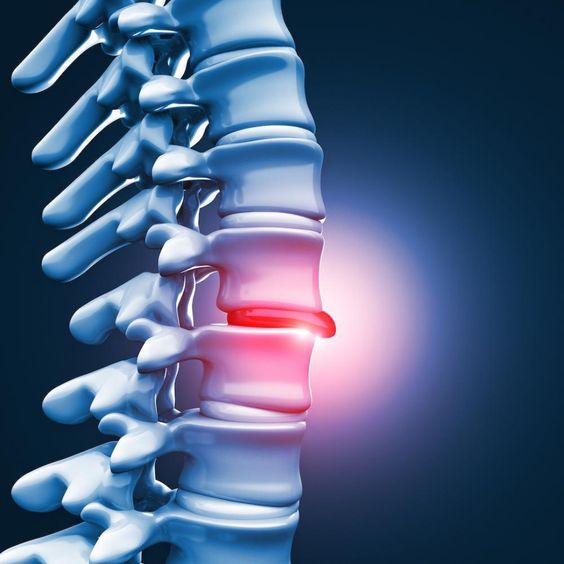
Herniated Discs and Bulging Discs
Back pain is a prevalent condition that affects millions of people worldwide. While it can stem from various sources, one common cause is issues with the intervertebral discs in the spine. Two terms you may have encountered in discussions about back pain are herniated discs and bulging discs. In this blog, we will delve into the world of spinal health and explore the key differences between these two conditions. Our guide through this intricate landscape is Dr. Sachin Mahajan, Pune’s leading Spine Specialist and Neurosurgeon.
The Role of Spinal Discs
Before distinguishing between herniated and bulging discs, it’s essential to understand the function of these discs in your spine. Spinal discs are like cushions situated between the vertebrae, providing flexibility and shock absorption for your spine. They consist of a tough outer layer (annulus fibrosus) and a gel-like inner core (nucleus pulposus). Issues with these discs can lead to discomfort, pain, and, in some cases, more severe symptoms.
Bulging Discs: A Mild Disturbance
A bulging disc is typically an early sign of disc trouble. It occurs when the outer layer of the disc, the annulus fibrosus, weakens or is subjected to pressure. This causes the disc to protrude slightly beyond its normal boundaries, resembling a tire that’s slightly inflated. Bulging discs may not always cause noticeable symptoms, and when they do, they are usually mild and can include localized pain or discomfort.
Herniated Discs: A Deeper Issue
A herniated disc, on the other hand, is a more advanced condition. It occurs when the outer layer of the disc becomes compromised to the point where the inner nucleus pulposus ruptures through the annulus fibrosus. This can lead to more severe symptoms, including radiating pain, numbness, tingling, and muscle weakness in the area where the affected nerve is located. Herniated discs are often caused by sudden trauma, repetitive stress, or the natural aging process.
Distinguishing the Symptoms
While both bulging and herniated discs can cause discomfort and pain, herniated discs typically lead to more pronounced and radiating symptoms. The intensity of symptoms often depends on the location of the affected disc and whether it is pressing on nearby nerves. In some cases, herniated discs may require more immediate attention and treatment.
Treatment Approaches
Treatment for bulging and herniated discs often starts conservatively. This may involve rest, physical therapy, medication, and lifestyle adjustments. Pune’s top Spine Specialist, Dr. Sachin Mahajan, may recommend a tailored treatment plan based on the specific condition, its severity, and the patient’s unique needs.
Prevention and Lifestyle Tips
- Preventing Disc Issues: Offer insights on how to reduce the risk of disc problems, including maintaining a healthy weight, practicing good posture, and adopting safe lifting techniques.
- Exercise and Core Strengthening: Discuss the importance of regular exercise and core-strengthening routines in maintaining a healthy spine. Provide examples of exercises that can help support the spine and prevent disc issues.
- Nutrition for Spine Health: Explore how a balanced diet with proper nutrients can contribute to spine health. Discuss foods rich in calcium, vitamin D, and omega-3 fatty acids, which are beneficial for the spine.
- Ergonomics in Daily Life: Offer practical tips on ergonomics, especially for individuals who spend long hours sitting at a desk. Explain how to set up an ergonomic workspace to reduce strain on the spine.
Treatment Options for Disc Issues
- Conservative Treatments: Explain the various non-surgical treatments for disc issues, such as physical therapy, medications, and lifestyle modifications. Discuss the role of these treatments in managing pain and promoting healing.
- Surgical Interventions: Provide an overview of surgical options for severe disc issues, including discectomy, laminectomy, and spinal fusion. Explain when surgery might be necessary and what to expect during the surgical process.
- Minimally Invasive Procedures: Detail the benefits of minimally invasive spine surgery, such as smaller incisions, shorter recovery times, and reduced pain. Discuss the conditions that can be treated with these advanced techniques.
Conclusion
Educating your readers about spine conditions and their management is essential in promoting spine health. By addressing the differences between herniated and bulging discs, explaining treatment options, and providing tips for prevention and recovery, you can empower your audience to make informed decisions about their spine health. Don’t forget to emphasize the importance of consulting with a specialist like Dr. Sachin Mahajan for personalized guidance and care.




